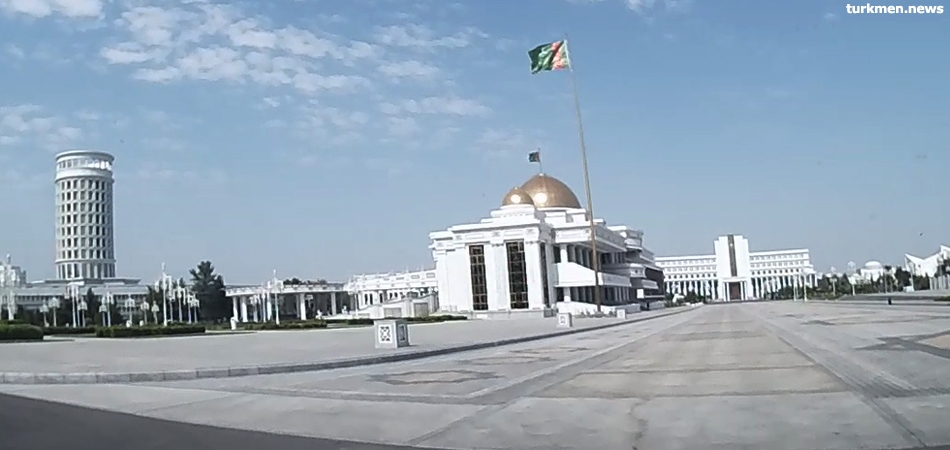
Berdimuhamedov Orders Demolition of Government Tribune to Make Way for $215M Business Center
24.07.2022
Clients may spend hours in Turkmenistan’s banks trying to change manats to U.S. dollars or to transfer money abroad. Though the banks are authorized to make foreign currency transactions, they deliberately drag their feet or even refuse to provide these services on the flimsiest of pretexts.

Dozens of people gather every morning at the Senagat Bank branch on 10 Yyl Abadancylyk Avenue in Ashgabat, but staff serve a maximum of 10 to 12 clients a day. A client has to stand around for at least an hour and a half at the bank in order to send money to a student abroad.
The bank opens at 9.00 in the morning, but people arrive as early as 6.00 in order to get their name onto the list. At opening time five people are allowed into the building and an employee gives each of them a printed slip. Even if a client arrives first, they receive a number 11 or 16. The reason? The bank staff take the first 10 to 15 slips for their “own” customers.
“First, two employees at a special counter check a whole package of documents, and if they don’t like something — for example, the stamp on a certificate isn’t clear, the date is smudged or the signature is in the wrong place — they turn the client away without making any concessions at all,” a source said.
If everything is in order, the document check takes around half an hour. After that, the employee stamps and signs a separate form for the client to take to the operations counter. Though there are already people waiting in line at the counter, the first people to be served are often those who supposedly joined the line the previous day, but in reality are the bank employees’ “own clients”.
The source said that every employee has their own intermediaries. For transferring $200, they take 450 manats ($25) for their services.
“The bank staff work extremely slowly; they often talk among themselves, but you won’t help yourself by comment or complaining: they might throw you out of the line or say the connection has gone down,” the source said. “And they might be away from their desk for a long time in the staff room, if, for example, one of their colleagues has a birthday and has brought in a cake.”
So one might stand an hour or more in this line. Sources say it is a similar story at Halk Bank and the Bank for Foreign Economic Relations.
Two currency exchange rates have been operating in Turkmenistan for several years: the state rate (which hasn’t changed since 2015 and stands at 3.5 manats to the dollar) and the market rate (around 18 manats to the dollar). Restricted categories of the population convert manats to dollars at the state rate: students studying abroad (at present not more than $12,000 a year can be transferred or placed on a student’s hard currency card), people travelling abroad for medical treatment on the recommendation of local doctors, and some businessmen who import basic foodstuffs.
Turkmenistan has faced a severe financial crisis since late 2014-early 2015, caused by a fall in income from oil and gas exports and the spending of billions of dollars on lavish construction projects.

Upmarket Bar in Ashgabat Closed After Brawls Involving President’s Cousins
08.04.2024

Turkmenistan’s Defense Minister Deprived Officers From Housing Entitlement Despite Widespread Resignations
28.02.2024

Murder and Suicide at Troubled Turkmen School
28.02.2024

Turkmen Prosecutor’s Office Claims Baloch Detainee’s Fatal Wounds Were Self-Inflicted
01.02.2024

Young Man Tortured to Death by Law-Enforcement Officers in Turkmenistan (video)
21.12.2023
Tell us!
Add comment
your e-mail will not be published